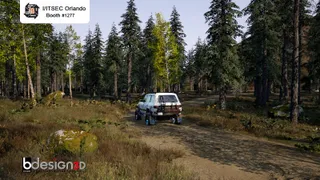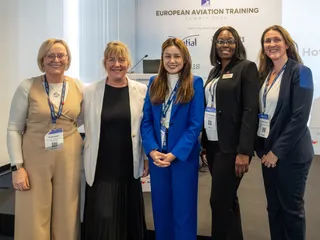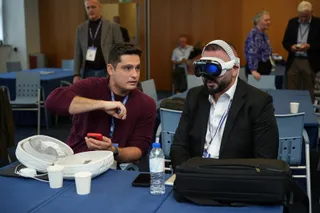STARCOM: Building the Future of US Space Force with Simulation and Training
Contact Our Team
For more information about how Halldale can add value to your marketing and promotional campaigns or to discuss event exhibitor and sponsorship opportunities, contact our team to find out more
The Americas -
holly.foster@halldale.com
Rest of World -
jeremy@halldale.com

Space Training and Readiness Command remains the focal point to sustain and expand US Space Force’s mission readiness through a mix of learning (training and education) activities. The author had the recent opportunity to obtain an update on STARCOM’s expanding portfolio from a command spokesperson speaking on a condition of anonymity. The Q&A with the STARCOM spokesperson follows.
MS&T: We hear and read the space domain has evolved to a contested environment. How is US Space Force responding to this challenge in terms of providing mission-trained staffs, units and individuals for the new environment?
STARCOM: Space Training and Readiness Command ensures that every exercise, using modeling and simulation tools, is infused with the latest operational intelligence, providing a training ground that is as close to real-world conditions as possible. Realistic, threat-informed training is pivotal, as it allows us to train against the most credible threats, ensuring our Guardians are prepared for any challenge they might face. STARCOM’s FLASHPOINT Tabletop Exercise (TTX) Series provides a forum where Space Operations Command (SpOC) units exercise Joint Space Operations Plan (JSOP)-focused Space Force Generation Model (SPAFORGEN) certification tasks to prepare for potential future conflict. And before training can be conducted, the contested space environment also requires STARCOM to test USSF space systems under operationally realistic, system-of-systems scenarios. Due to the complexities and costs of testing on orbit, STARCOM relies on modeling and simulation to replicate these scenarios, evaluate system performance under combat conditions, and validate the tactics, techniques and procedures to be employed by our Guardians. This approach to testing is encapsulated in the vision statement of STARCOM’s Test Enterprise Division: “No Surprises in Combat.” It’s why we test.
MS&T observes the US military services increasing their use of AI, XR, data analytics, digital twin technology and other emerging enablers to strengthen training readiness. Provide a few instances of how the command’s learning (training and education) programs are including these and other technologies.
STARCOM: STARCOM is looking at ways that AI can help create customized training plans tailored to individual learning styles and needs, improving knowledge retention and reducing training time. AI can analyze vast amounts of data to identify trends, patterns, and areas for improvement, enabling the Space Force to refine its training programs and optimize resource allocation. AI-powered training can simulate cyber-attacks and help space professionals develop the skills needed to defend against them. AI can create realistic scenarios for training space operators in tactics, techniques, and procedures (TTPs) for space-based operations.
MS&T: A brief “help wanted” list --- Space Force's three top training challenges and gaps it needs the support of the simulation and training industry and academia to help meet.
STARCOM: The USSF is looking at how we build realistic, timely training scenarios that align with the timelines of the joint and allied forces.
MS&T: A follow-up: provide Space Force's point of contact for industry and even academia to submit their innovative solutions for your service’s training and learning programs.
STARCOM: Commercial companies and academic institutions interested in sharing an idea, product or service should visit the Connect with SSC Front Door website to submit their information. Academic intuitions interested in partnering with STARCOM can reach out to us by email: 13DOS.USSF.PartnershipDays@spaceforce.mil
MS&T: Outline how US Space Force training and exercise activities are expanding with US allies and partners in the space domain.
STARCOM: Recognizing the crucial role space operations play in national security, allies and partners are increasingly turning to the National Security Space Institute (NSSI) for world-class education and training. A center of excellence under Delta 13, NSSI already provides courses to 62 partner nations and NATO, with participation expected to grow as nations invest in professionalizing their space cadres. This surge in interest is evident in NSSI's Intermediate and Senior Leaders Education programs, hosted at Johns Hopkins University in Washington, DC. International partner enrollment for these prestigious programs has jumped from one to six between the 2023-2024 and 2024-2025 academic years, a trend NSSI is committed to fostering in future cohorts.
MS&T: Anything else to add?
STARCOM: As STARCOM continues to build the future of the US Space Force, its focus remains on developing a culture that connects, inspires, and prepares Guardians–officer, enlisted, and civilian alike–for the challenges of tomorrow. Through innovative programs like the Officer Training Course, Vosler’s Fellowship series, and FLASHPOINT, STARCOM is shaping a combat-credible force equipped to defend US interests in, from, and to space.
STARCOM and USSF Have Our Attention
This Q&A briefly covered a wide range of activities across the STARCOM and USSF learning enterprise. Of continued interest to MS&T will be the funding levels for these programs in the Trump administration’s FY26 budget request. The document is expected to be delivered to Capitol Hill within the next several weeks. At the same time, we will be attentive to the continued participation of Guardians and their counterparts from allied and partner nations in space-focused exercises and supplemental training and learning activities. STARCOM and USSF have built a solid foundation to gain multi-national participation in these efforts. Now is not the time to backslide on these initiatives.


